The Seven Different Types of Honey Bees
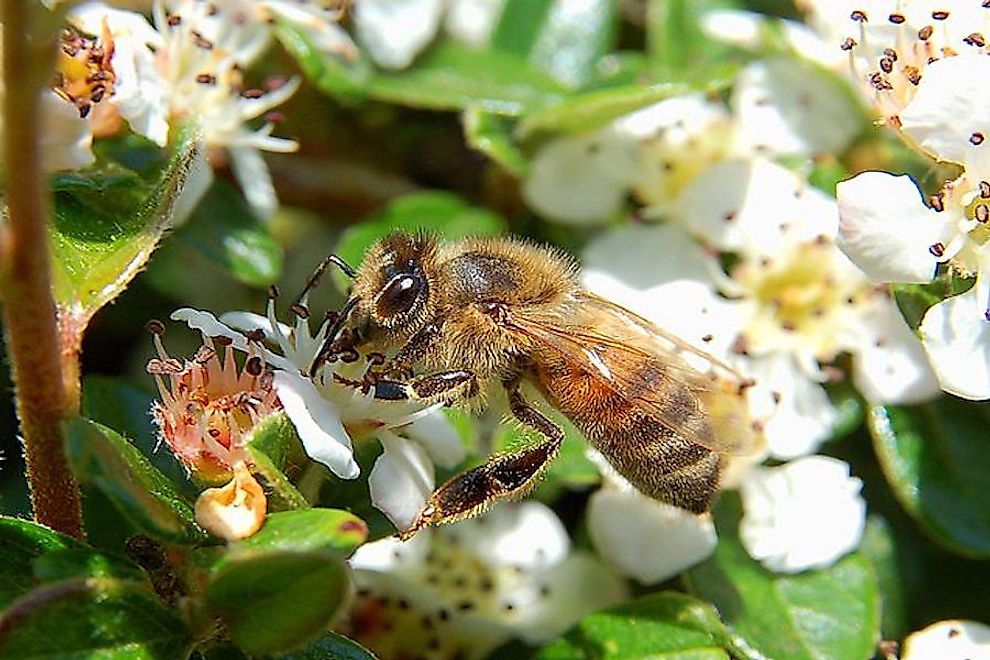
Honey bees are members of the genus Apis, famous for the production and storage of honey and the usage of wax to create colonial nests. Currently, seven species and 44 subspecies of honey bees are known to inhabit the world. The most common among the seven species is the Western honey bee that is found in all continents with the exception of Antarctica. It has also been domesticated for the production of honey and the pollination of crops. Only members of the genus Apis are known as the true honey bees. However, some other closely related bees are also known to produce honey. Melittology is the study of honey bees.
7. Apis nigrocincta
The Apis nigrocincta is a honey bee species living in the Philippine island of Mindanao, Sulawesi, and Sangihe in Indonesia. Little is known about the biogeography os this species. In Sulawesi, most of the colonies of this honey bee are found at elevations above 400 meters. The bees build medium-sized cavity nests with multiple combs that are nearly equidistant from each other. The nesting sites are close to the ground. Two types of combs are found with the smaller being for the workers and the larger ones for the drones. Cells for the queen are found towards the lower edges of the combs.
6. Apis mellifera
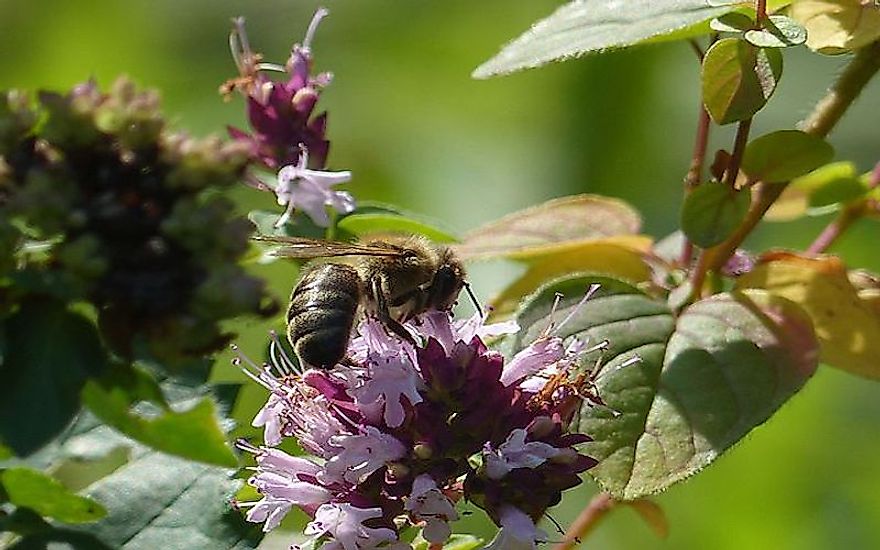
The European honey bee (Apis mellifera) or the western honey bee is the most common among the honey bee species of the world. Like the other honey bees, the European honey bee is also highly social in nature. It was one of the first insects to be domesticated and it the most common honey bee reared by beekeepers for their honey and role as a pollinator. The honey bee is currently found in all continents with the exception of Antarctica. The honey bee is threatened by a number of factors including pests and disease.
5. Apis koschevnikovi
Apis koschevnikovi is a honey bee species that is found in the Borneo island of Indonesia and Malaysia. The bees are all dark and brown banded. The queen and the drones have light brown bands on the abdomen while the workers have light orange abdominal bands. Within their range, the bees inhabit tropical evergreen forests. Habitat destruction due to clearance of land for plantations is the biggest threat to the survival of these bees. The bees live in small colonies in few combs within the tree cavities in the forests. It is a nectar-feeder and an important pollinator in its habitat.
4. Apis cerana
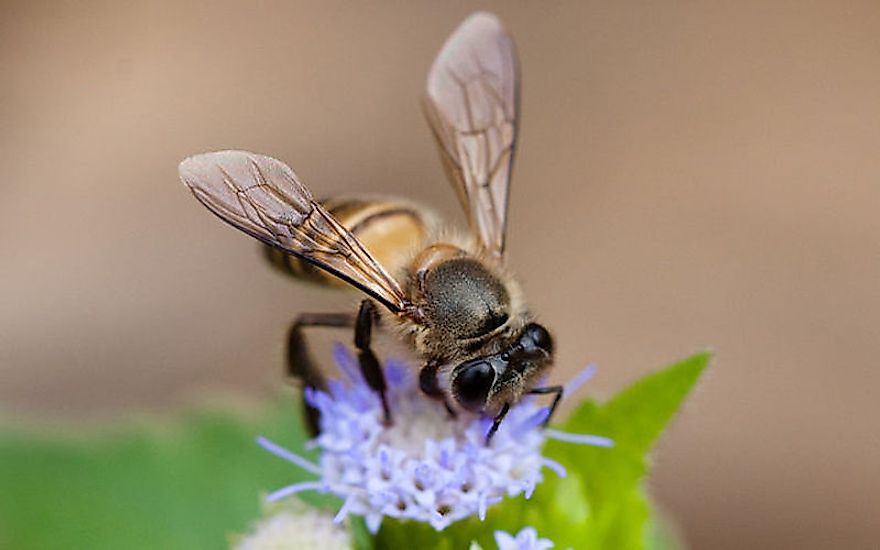
The Asiatic honey bee (Apis cerana), also known as the eastern honey bee, is a honey bee species that lives in southeastern and southern Asia. The bees build nests with multiple combs in cavities with a small entrance that protects the colonies from threats. The nests are made up of about 100,000 cells when complete and can house 6,000 to 7,000 individuals. Pollen, nectar, and honey constitute the diet of these bees. It is also a very social species with eight distinct subspecies. They are found in a wide range of climatic zones ranging from taigas to moist tropical rainforests, steppes, grasslands, deciduous forests, etc. The honey bees are known for their ability to thermoregulate and use it as a mechanism of defense. For example, when the Japanese giant hornet enters their nest, about 500 bees surround the hornet and vibrate their flight muscles till a temperature of about 47 °C is raised. Such high temperature kills the hornet while it is still below the bees’ tolerance limit of 48–50 °C.
3. Apis dorsata
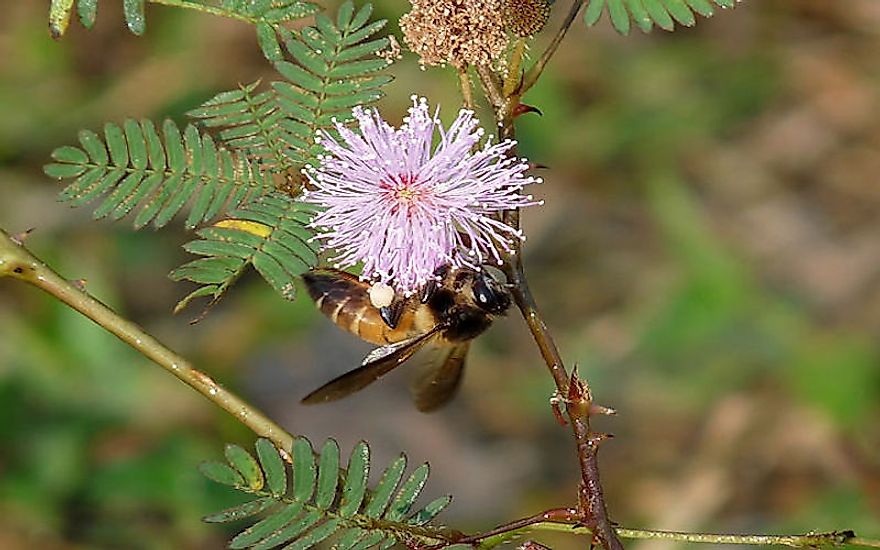
The giant honey bee (Apis dorsata) is found primarily in the forested areas of South and Southeast Asia with significant populations in India, Nepal, Malaysia, and Singapore. The bees are about 17 to 20 mm in length. The nests are built in the open at great heights like cliff overhangs, tall buildings or tall trees in dense forests. These bees are known for their vicious behavior and aggressive nature. Their hives are an important source of beeswax and honey which has been harvested for centuries by the indigenous people of the region inhabited by the bees. The giant honey bees build a single vertical comb that is covered by several layers of a dense mass of bees. The conical shaped combs have hexagonal cells and are about 1 meter in width. More than 200 colonies of 100,000 bees in each colony might build nests close to each other, exhibiting high levels of social tolerance for each other. Humans have a long relationship with the giant honey bees. Paleolithic-era cave paintings of these bees have been found in Valencia, Spain. However, human-induced activities like use of pesticides, urbanization, honey hunting, and deforestation threaten the bee populations in a significant manner. The bees are known to deliver extremely painful stings and one known case of a fatal defensive attack on a human also exists.
2. Apis florea
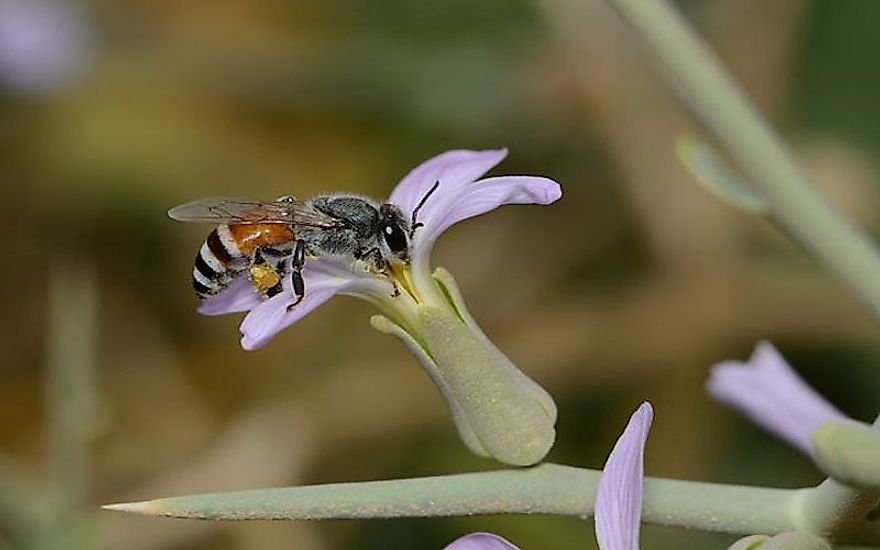
The red dwarf honey bee (Apis florea) is a small honey bee species found in parts of southern and southeastern Asia, as well as Africa. The bees build open nests and form small colonies which makes them more susceptible to predators. The bees dance to reach a decision to build a new nesting site. The decision is taken when the majority of the individuals dance in the direction of the proposed new site. An auditory signal of piping is used by the worker bees to inform the swarm that the decision has been taken and then the entire swarm moves off in the new direction. The bees build a single comb nest on a single branch and might salvage the wax from the previous nest if it is close to the new one. The bees feed on honey, nectar, and also pollen. Foraging signals are also communicated via dancing displays. Unfortunately, the red dwarf honey bees are extensively hunted for their honey. The bees also have an important place in Hindu and Buddhist culture. Increased deforestation in many areas has forced the bees to restrict their range and occupy areas that are less populated.
1. Apis andreniformis
The black dwarf honey bee (Apis andreniformis) lives in the tropical and subtropical areas of southeast Asia. It is a relatively rare species and has been recently classified as a separate species. They are the darkest of the Apis genus, and the queens are almost entirely dark. The worker bees have lighter and almost yellow scutellums. These bees form open-air nests in the darker areas of the forest receiving about 25 to 30% of normal sunlight. The nests are single-combed and hang from small twigs of forest trees at an average altitude of about 2.5 meters. The honeycombs are about 70 to 90 mm in size. Honey storage is found in the area surrounding the branch and below it lies the brood area where the honey bee larvae develop. The black dwarf honey bee is generally a lowland species and might migrate to higher lands during the rainy season. The species is utilized by humans to prepare some commercial products like honey, wax, royal jelly, and bee venoms. They are important pollinating agents in their region of occurrence.











